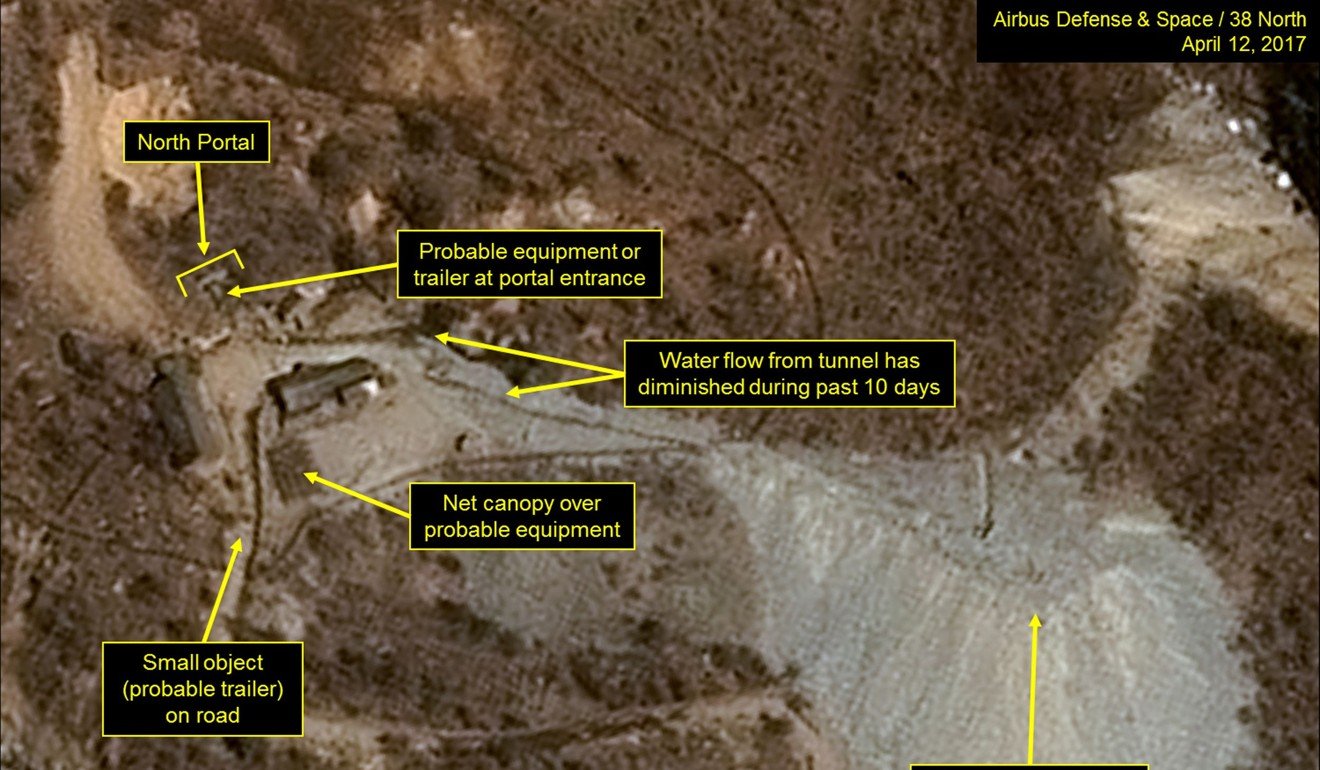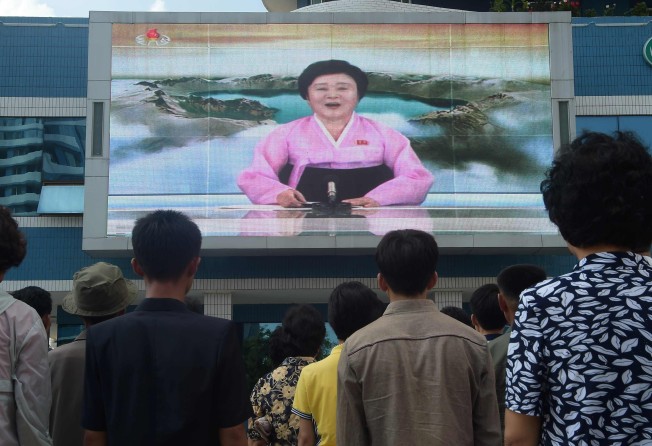
Landslides detected at North Korea’s nuclear test site after Chinese expert warns blast zone at risk of imploding
If mountain under which last five bombs were ‘almost certainly’ detonated crumbles, radiation would leak across region, expert warns

Landslides have been detected in the detonation area of North Korea’s latest nuclear test – days after Chinese experts said the mountain under which the rogue state’s five most recent bomb tests likely occurred could be at risk of collapsing.
Satellite images released Wednesday by the respected 38 North website showed the weekend test triggered landslides around the blast site – although there was no visible crater that would indicate a collapse.
38 North published satellite images taken Monday showing changes in the surface at the Punggye-ri test site where the ground had been lifted into the air by the tremors, and small landslides going into stream beds.
It came after researchers at the University of Science and Technology of China in Hefei, Anhui province, said they were confident that North Korea’s five most recent nuclear tests were all carried out from under the same mountain at Punggye-ri.

The team from the seismic and deep earth physics laboratory made the claim in a statement posted on their website on Monday. Its leader, geophysicist Wen Lianxing, said that based on data collected by more than 100 earthquake monitoring centres in China, the margin of error was no more than 100 metres.
Wang Naiyan, the former chairman of the China Nuclear Society and senior researcher on China’s nuclear weapons programme, said that if Wen’s findings were reliable, there was a risk of a major environmental disaster.
Another test might cause the whole mountain to cave in on itself, leaving only a hole from which radiation could escape and drift across the region, including China, he said.
“We call it ‘taking the roof off’. If the mountain collapses and the hole is exposed, it will let out many bad things.”
Sunday’s blast was followed by an earthquake eight minutes later, which China’s seismic authorities interpreted as a cave-in triggered by the explosion.
Not every mountain was suitable for nuclear bomb testing. Wang said, adding that the peak had to be high, but the slopes relatively flat.
Based on the fact that North Korea has a limited land area and bearing in mind the sensitivity of its nuclear programme, it most likely does not have too many suitable peaks to choose from.
How long the mountain would continue to stand would also depend on where the North Koreans placed the bombs, Wang said.
“If the bombs were planted at the bottom of vertically drilled tunnels, the explosion would do less damage,” he said.
But vertical tunnels were difficult and expensive to build, and it was not easy to lay cables and sensors to collect data from the explosion, he said. Much easier was to bore a horizontal tunnel into the heart of the mountain, but this increased the risk of blowing off the top, he said.
The increasing size of North Korea’s nuclear bombs was also making “topping” more likely, Wang said.
“A 100 kiloton bomb is a relatively large bomb. The North Korean government should stop the tests as they pose a huge threat not only to North Korea but to other countries, especially China,” he said.
Wang added a caveat, however, saying that the calculations made by Wen and his team could be wrong. Quake waves travel at different speeds through different rocks, so it was not easy to make precise predictions based on seismic data, he said.
In the meantime, Chinese authorities, including the National Nuclear Safety Administration, would continue to closely monitor every nuclear test conducted by North Korea, Wang said.
Radiation readings taken by the government on Monday showed nothing out of the ordinary.
Wen’s team estimated that the energy released in the latest test was about 108.3 kilotons of TNT, or 7.8 times the amount released by the atomic bomb dropped by the US on the Japanese city Hiroshima in 1945. It also dwarfed all previous bombs tested by the North Korean military.
A team of scientists in Norway estimated the amount of energy released by the blast at Punggye-ri on Sunday at 10 times that of the Hiroshima bomb.
Wen, who is also a professor of geosciences at Stony Brook University in New York state, did not immediately respond to a request for comment.